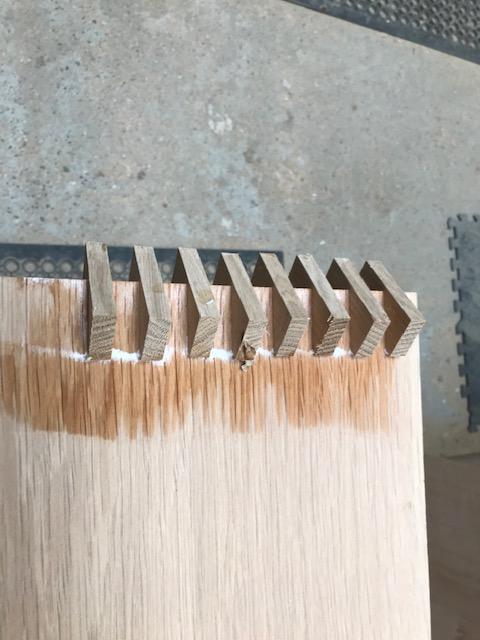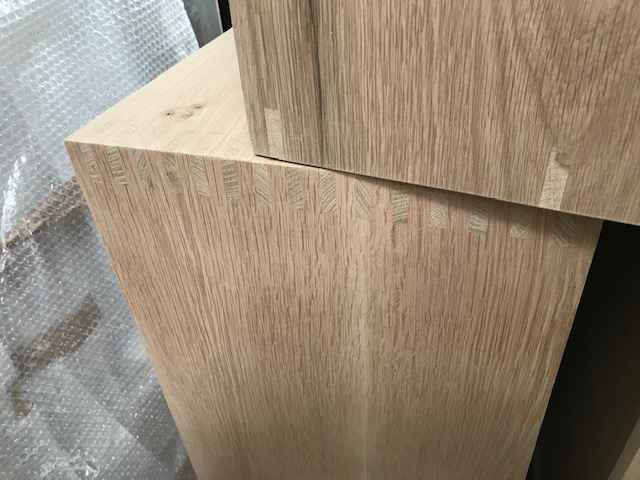doctor Bob
Established Member
- Joined
- 22 Jun 2011
- Messages
- 5,171
- Reaction score
- 1,881
I'm the only one working for the business at present.
Making a modern kitchen.
Drawers have no fronts attached, they are exposed fronts with splines.
I wanted them to have the slines in walnut but the client went oak in oak.
Really quite enjoying it
2 different sizes, either 8 or 15 slines at the front and 2 or 3 splines at the back. Drawer heights are 180 and 320mm.



Making a modern kitchen.
Drawers have no fronts attached, they are exposed fronts with splines.
I wanted them to have the slines in walnut but the client went oak in oak.
Really quite enjoying it
2 different sizes, either 8 or 15 slines at the front and 2 or 3 splines at the back. Drawer heights are 180 and 320mm.










































